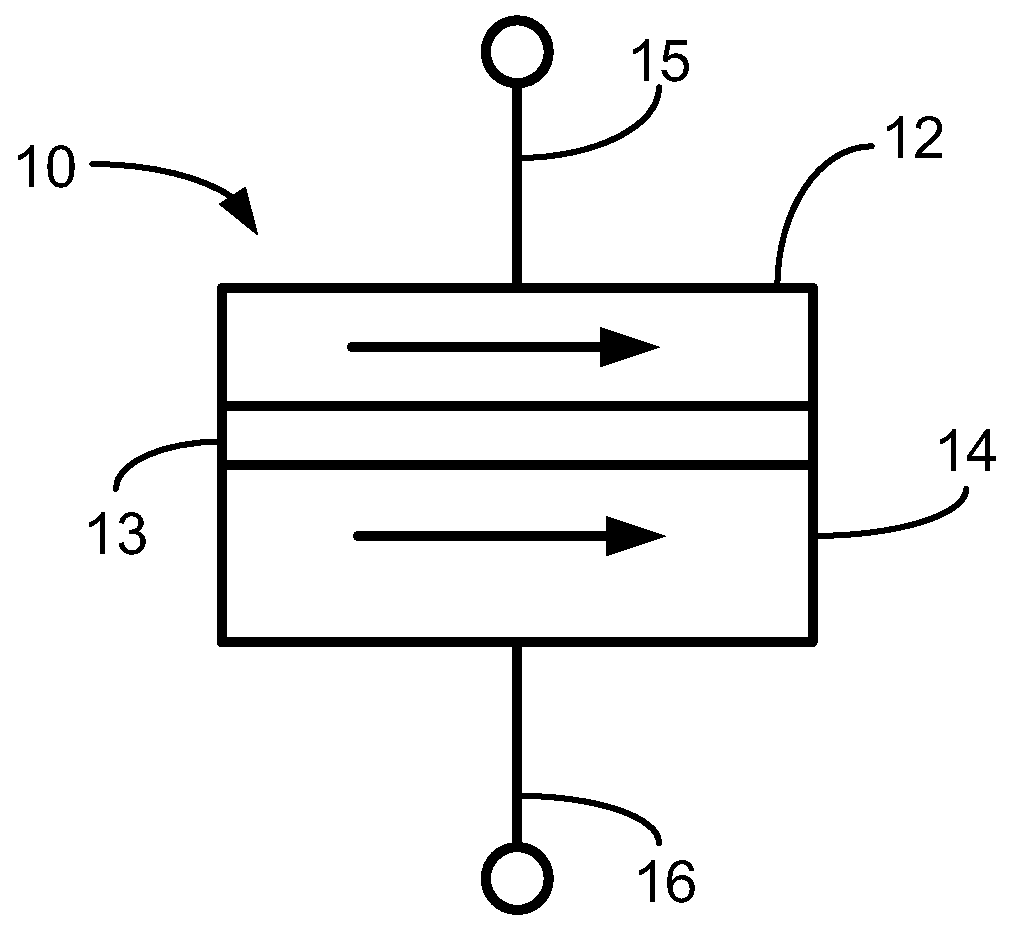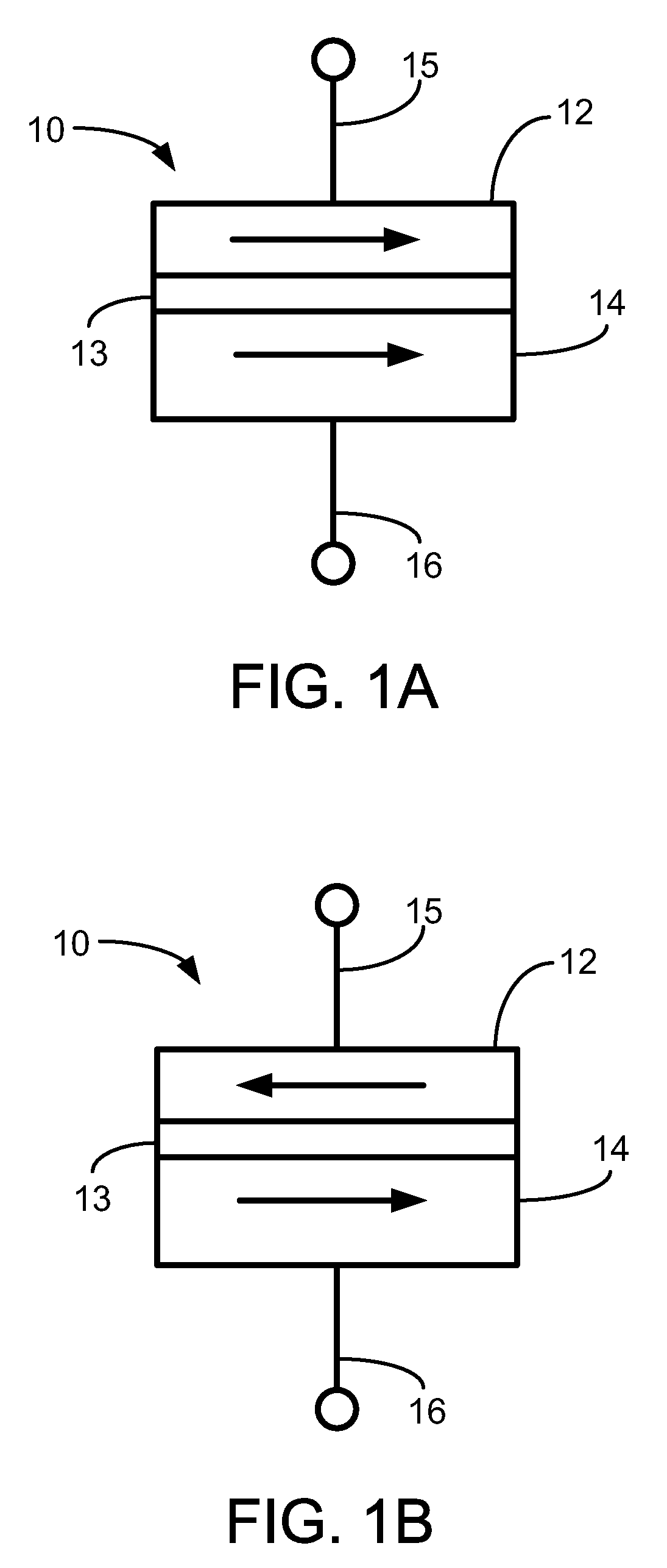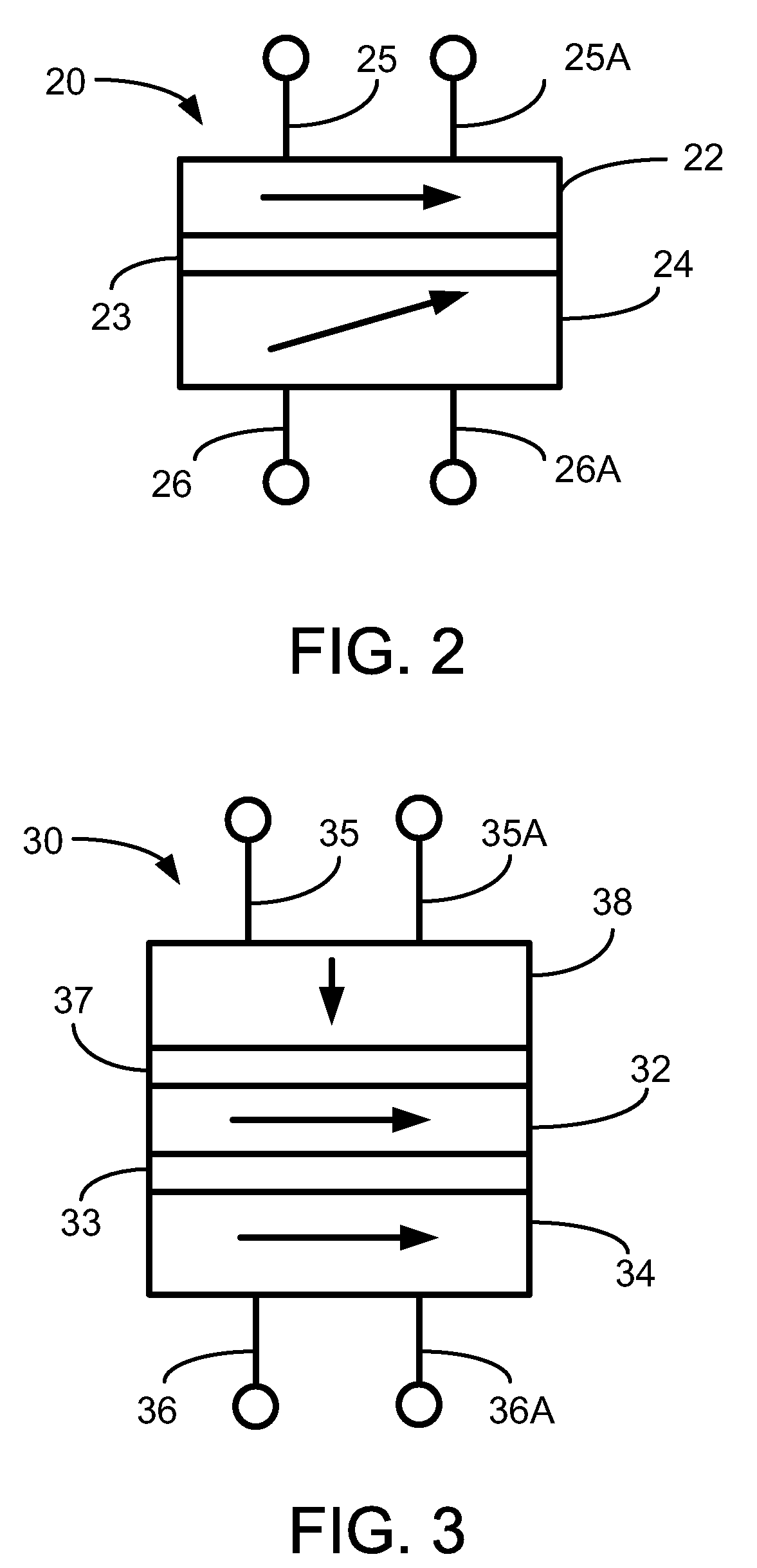Oscillating current assisted spin torque magnetic memory
a technology of assisted spin torque and magnetic memory, which is applied in the direction of oscillator generators, digital storage, instruments, etc., can solve the problems of reducing the stability of magnetic elements, excessive heat generation, and small size, and achieves the effect of reducing the switching current and improving the switching performance of the memory cell
- Summary
- Abstract
- Description
- Claims
- Application Information
AI Technical Summary
Benefits of technology
Problems solved by technology
Method used
Image
Examples
first embodiment
[0046]A first embodiment is to generate AC current with a constant frequency and generate a series of bipolar current pulses which follow the changes in the frequency of the uniform mode. In one particular example, an AC current of 0.15 mA, polarized perpendicular to the free layer, and a DC current, polarized along the semi-major axis of the free layer, are applied. At optimal frequency (approximately 0.66 of a small angle resonant frequency) the DC current needed to switch the magnetization is reduced significantly due to the presence of the AC current. The width of the frequency window during which the switching current is reduced is proportional to the strength of the AC current.
second embodiment
[0047]A second embodiment is to use “chirped” AC pulses, a particular implementation of which is shown in FIG. 4. The specific numerical values indicated in FIG. 4 were obtained by modeling for a specific set of spin torque memory cell and current value parameters. In FIG. 4, the magnetization MZ / MS is illustrated as a function of time for switching with an optimized sequence of square pulses with an amplitude I0=0.17 mA. The chirped AC pulses constantly resonantly excite the uniform precession of the magnetization, which corresponds to aJ having the opposite sign to the value of MxMz, so that the switching can be performed with small AC current, even in the absence of a DC current. Levels as low as 0.05 mA of AC current reduce the DC current switching threshold to 0.3 mA. Switching speed is also greatly reduced, dependant on the value of applied AC current.
[0048]FIG. 5 illustrates the switching time as a function of chirped AC current amplitude, in the absence of DC current. The nu...
PUM
 Login to View More
Login to View More Abstract
Description
Claims
Application Information
 Login to View More
Login to View More - R&D
- Intellectual Property
- Life Sciences
- Materials
- Tech Scout
- Unparalleled Data Quality
- Higher Quality Content
- 60% Fewer Hallucinations
Browse by: Latest US Patents, China's latest patents, Technical Efficacy Thesaurus, Application Domain, Technology Topic, Popular Technical Reports.
© 2025 PatSnap. All rights reserved.Legal|Privacy policy|Modern Slavery Act Transparency Statement|Sitemap|About US| Contact US: help@patsnap.com



